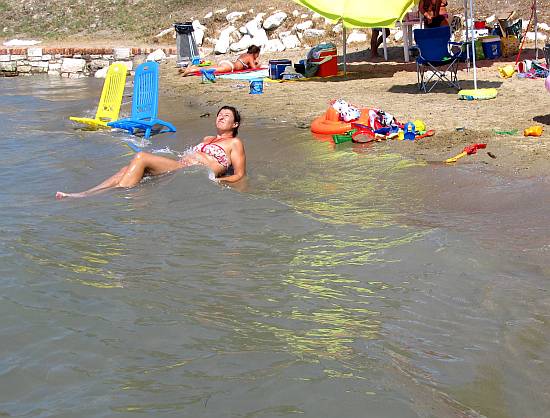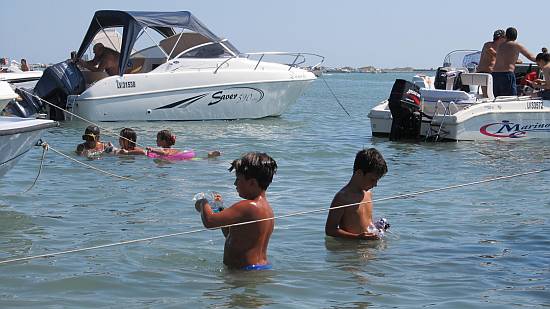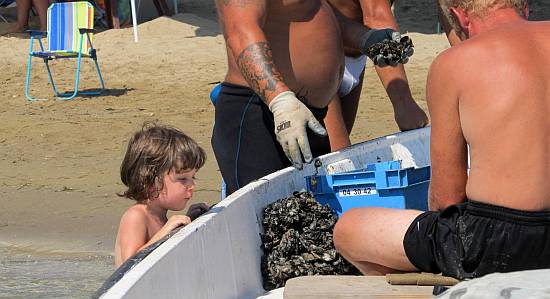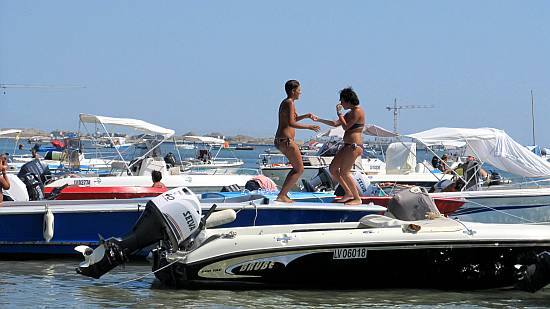There’s a saying here — perhaps in all of Italy, perhaps in the whole world — that the mother of the ignorant is always pregnant. I’d expand that to include the mentally infirm, the ethically deficient, and a smattering of Venetian rowing racers, the race judges, the spectators, and anybody else who is evidently suffering from hormone overload in any situation more emotional than drinking coffee.
I pause to note that, once again, this post has no photographs due to multiple crises inside my computer, which is being taken to the hospital today for a major operation. So there will be a lapse in communication while it — and I — recuperate.
Back to racers and judges and spectators.
The Regata Storica of a week ago (September 2, 2012) will be remembered more for the catastrophe which I am about to describe than for the fact that the Vignottini won and their lifelong rivals (D’Este and Tezzat) finished — not second — but THIRD. You hear the sound of a page being turned in the annals of Venetian rowing, because even if D’Este and company were to win the next five races in a row, the chink in the armor is now too obvious to ignore. He also looked extremely and uncharacteristically blown apart by the race.
But as I say, that isn’t what everybody is babbling about. They’re babbling about the way the judge’s motorboat ran into the yellow gondolino, which was third, thereby knocking it out of the race. Because Fate sometimes shows a dangerously unruly sense of humor, it couldn’t have happened somewhere up in the distant reaches of the Grand Canal where only three cats are around to notice the race, if they’re awake. Of course not. This hideous, and, I think, unprecedented, little crash occurred right in front of the reviewing stand at the finish line, where assorted race officials and scores of invited guests and lots of the salt of the earth in their own boats could see it PERFECTLY. Also the national television station whose cameras were broadcasting the event live.
Like most systems, the way the judges’ boats are choreographed is perfect, but only if the plan is executed. In this case, one judge’s boat follows the peloton up to a certain point in the Grand Canal (the “volta de canal,” at the curve of Ca’ Foscari where the bleachers and judges and finish line are all together). At that point, in order that the judge’s motorboat doesn’t have to cross the canal and thereby potentially get in the way of the boats as they are racing upstream, the first judge’s motorboat stops, and a second one, waiting on the other side of the canal out of harm’s way, picks up the task of following the herd.
But this time the first boat didn’t pull over to the side and stop, to hand off the race to the next boat. It paused, and then, without looking (or thinking, or something), the judge aboard told the driver to do something which clearly involved gunning the motor. I was in a boat right where this happened, so I am a certified eyewitness.
Whether the judge wanted to follow the race, or reposition the boat in some way, isn’t clear. But doing anything at that moment, in that location, was not only wrong, it was crazy. Because the yellow (“canarin”) gondolino, steaming ahead at full speed in an excellent third position, was right behind the propellers when they spun. In two nano-seconds, the left hind hip of the motorboat swerved left, hit the ferro of the prow of the gondolino, threw the very narrow and moving-very-fast boat off balance, and sent it hurtling off-course into the scrum of boats tied up to the pilings.
You might think that the only crazy person in this scenario would be the judge on the boat who told the driver to move instead of standing perfectly still. And you’d be right.
Except that almost immediately, other crazy people began to wail and vociferate. Wild ideas began to be thrown around in bars and in the newspaper (and even, I think, among the judges), almost all of which came down to suggesting that the crew on canarin be awarded the third-place pennant in a tie with the pair that actually did finish third.
The Vignottini even offered to pay the prize money to the unfortunate ex-third-place boat.
The issue still doesn’t seem to be settled, but here is how I see it:
First, I don’t understand why anyone thinks it makes sense to give a prize to someone who didn’t win it. A consolation prize would be nice, of course (a house in the mountains, maybe, or a six-month cruise to Polynesia), but a prize for racing pretty much requires that you race. If the crash had occurred three yards before the finish line, you might be able to make a case for their deserving some sort of pennant and/or money. But there was still plenty of race ahead. Who’s to say that they would have finished third? They might have come in first. Or even last.
Second, a racer with any degree of self-respect (possibly a very small category, true) wouldn’t want either a pennant or money that he hadn’t won himself. Why degrade them with stupid offers that are only moderately able to make the onlookers feel slightly better? Not to mention make the guilty judge feel slightly less bad.
Third, I’m glad I mentioned the judge. Because while the rowing world is in the throes of what seems to be a hormonal solar flare, no one so far has turned from the victims to the perpetrator.
Why, I ask myself, and am now asking the world at large, is everyone so fixated on making the victims feel better without pausing to suggest, much less demand, that the judge deserves a serious punishment? Can you think of a sport in which a referee or a judge who directly and visibly damages an athlete in the midst of the game doesn’t receive even the tiniest murmured reproof?
It gets crazier. Because last year, at the race at Burano, there was a crash between the first two boats at the buoy where the racecourse turns back, knocking both of them out of commission. The judge overseeing that crucial part of the race was so rattled that he stopped the race right there. The prizes were awarded according to the positions of the boats at the buoy, even though there was at least half again as much race still to go.
Yes: That was the same judge.
I began this post with a saying, so in closing I invoke a special Venetian aphorism: “Un’ xe bon, ma do xe coglion.” (OON zeh bone, ma doh zeh cole-YONE.) The literal translation makes no sense, but here’s what it means: Screw up once, you can be excused; screw up twice, and you’re an asshole.
If anyone but me manages to reach this conclusion, I’ll let you know. But it’s not looking very likely.





